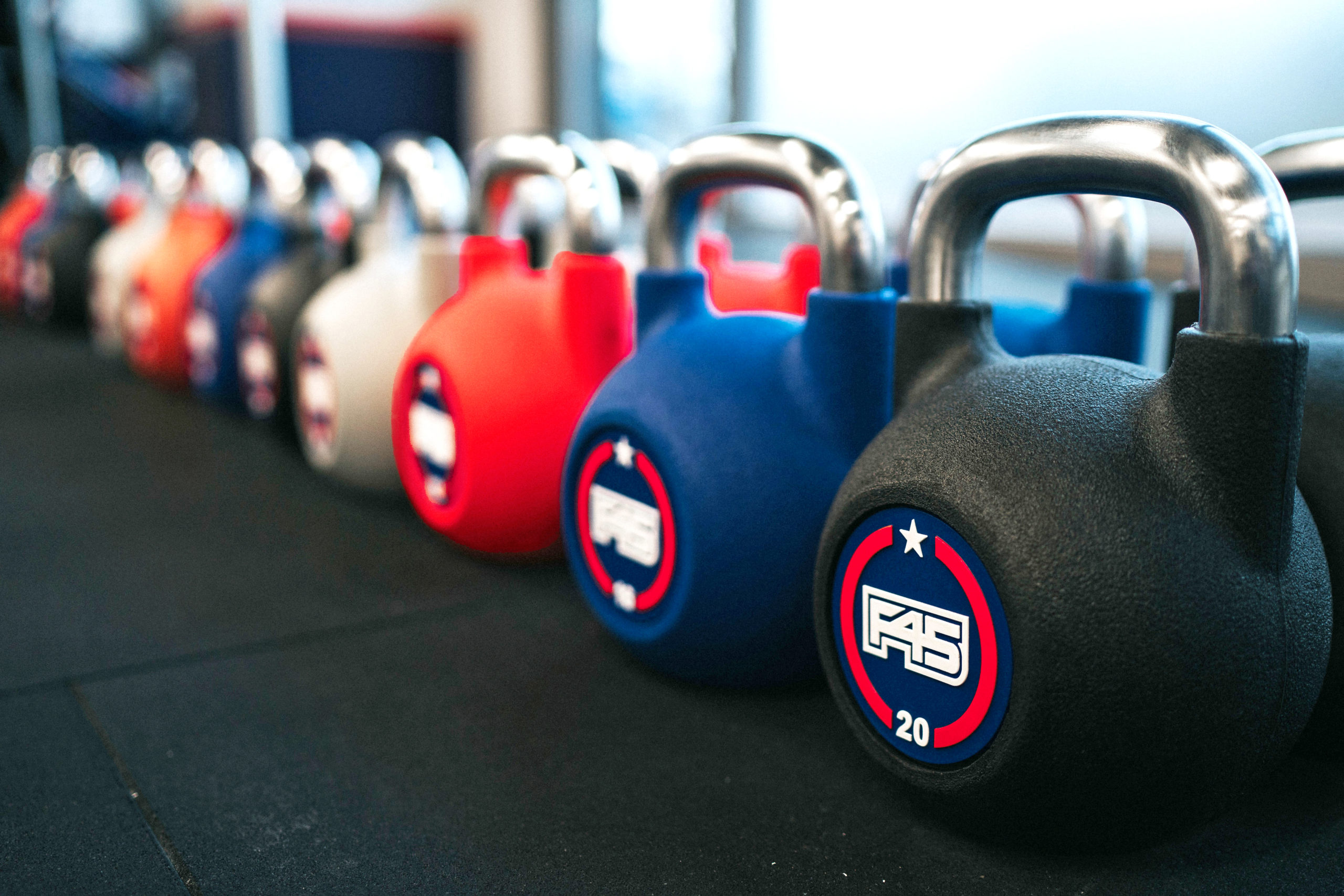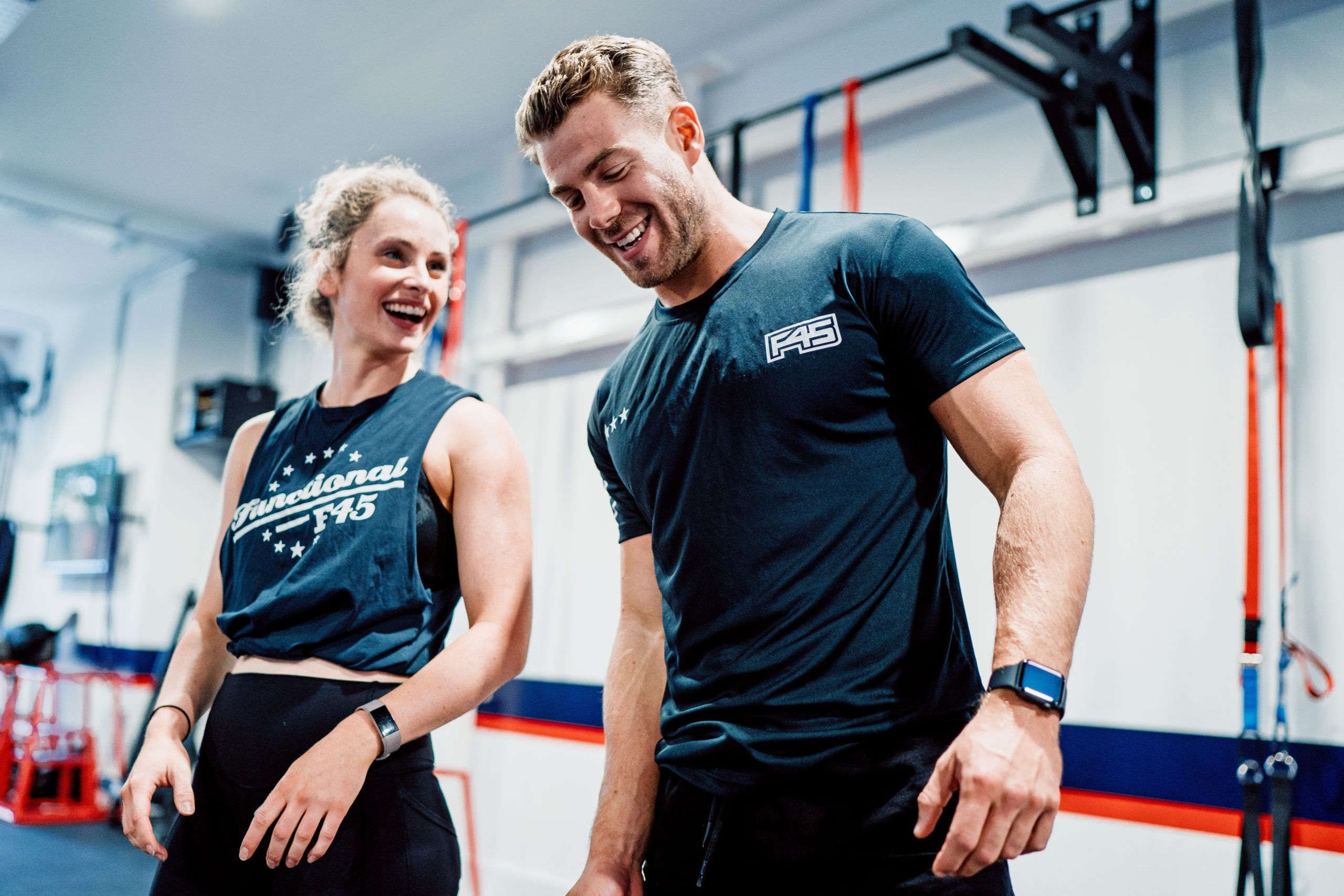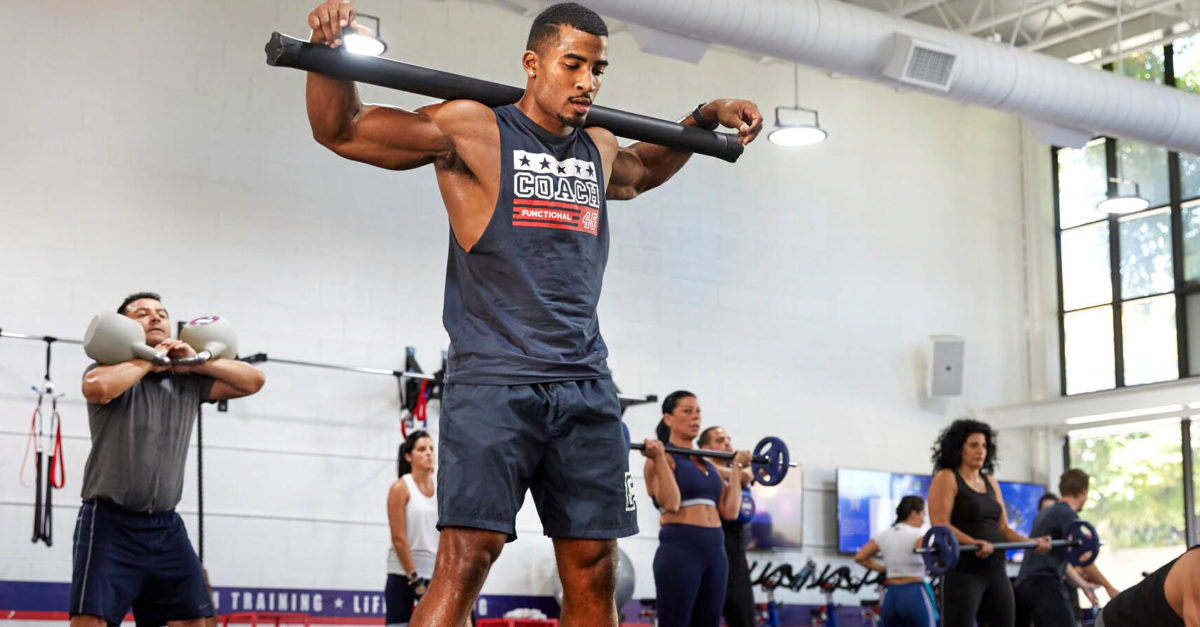Fast, Fun Fitness
Think back to junior high gym class. You might remember a time when your gym was divided into stations, with a different type of exercise at each one. Some stations may have been reserved for climbing, some for jumping, and others for running.
Now, if you recall how you felt about those days, you might remember how exhausted you were when all was said and done. Circuit training, as it’s properly known, can be really hard. But that’s why many fitness programs and gyms have adopted this style of training for clients. It is a highly effective way to target different areas of your body and heart rate in one session and, on top of that, it puts some variety and excitement into each workout.
You may have heard about some of the most popular circuit-focused programs, such as F45 Training, but you might not exactly understand what circuit training entails or how to get started.
Whether circuit training is a completely foreign concept or you’re just looking to mix up your routine, this guide highlights where to begin, the benefits, and simple tips for a heart-pounding workout.
The Circuit-Training Basics
You can think of circuit training as a big obstacle course—with multiple components that have to be completed to move on to the next step. A typical circuit-training routine will have a warm up, followed by 8–10 exercises—performed for about a minute each—with 30-second rest periods in between. Depending on your goals and timeframe, a circuit can be repeated as many times as necessary and can be completed in as little as 30 minutes.
Circuit exercises are based primarily around HIIT (high-intensity interval training)-style workouts, meaning they require quick bursts of energy instead of prolonged exertion. “An effective approach to circuit training is to focus on multiple muscle groups,” says Toni Woodward, an F45 trainer. “Because the body is a kinetic chain, it’s important to work out corresponding muscle groups, even in an arm- or a leg-focused workout.”
You can combine various types of exercise, including weight training and aerobics, in order to achieve your specific goals. Though there are no set rules that say you must focus only on a specific muscle group or type of training per circuit, it is important to give your muscles rest days in between so that they can recover. For example, if your Tuesday workout was focused on your upper body, you’ll want to focus on a different muscle group on Wednesday.

Ready, Set, Train
Once you’re familiar with the basics of a proper circuit-training workout, you can take steps to incorporate it into your current routine or establish a regimen that’s tailored to your goals. According to Woodward, circuit training can be an effective method of training for most everyone—regardless of one’s current skill level or abilities. Circuits can be tailored and specific exercises can be modified depending on a person’s experience. “At F45, we focus on a balance of weight loss and lean muscle development, while emphasizing day-to-day functional movements” she says. “Circuit and HIIT training have been known to increase muscular endurance and strength, as well as assist in body composition changes—decreasing fat percentage and increasing lean muscle mass.”
If you’re unsure of the specific exercises you should be working into your circuit program, training centers like F45 are a great place to start because they set you up with predetermined workouts that have been proven effective for other people. This can eliminate the guesswork for you, and, as a bonus, you’ll have plenty of help from professional trainers who can guide you every step of the way. For those who have never attempted a HIIT-style workout before, Woodward recommends listening to your body and taking it slow. It’s more important to complete the entire workout safely than to burn out before it’s through.
Using the F45 method as an example, a typical week of training could include cardio-focused workouts three days per week and resistance (weight) training three days per week, with a day reserved for rest. Alternating between cardio days and weight training days is critical to give your muscles time to repair.
Sample Circuit-Training Schedule
Remember to warm up before each workout, and cool down after.
MONDAY, WEDNESDAY, FRIDAY
Perform 8–10 HIIT-based exercises. Rest for 30–45 seconds in between each exercise. Repeat based on individual goals and time.
• Jump squats
• Side lunges
• Jumping rope
• Plank jacks
• Mountain climbers
• Burpees
• Planks
• High knees
• Jump lunges
• Reverse crunches

TUESDAY, THURSDAY, SATURDAY
Perform 8–10 resistance-based exercises. Rest for 30–45 seconds in between each exercise. Repeat based on individual goals and time.
• Push-ups
• Pull-ups
• Arm raises
• Single-leg bridges
• Banded kick-backs
• Chest presses
• Barbell curls
• Bent-over rows
• Dead lifts
• Leg presses
SUNDAY
Rest day. Drink plenty of water, get adequate sleep, and incorporate stretch movements to help muscles recover.
Power in Progress
One of the biggest benefits of this training method is the mimicking of natural body movements you might need to perform on a daily basis. Functional training is not only beneficial from a fitness standpoint but also for general well-being. Though programs like F45 have a team mentality, circuit training is an ideal method for achieving individual goals.
“Circuit training can help to elevate an individual’s overall health, including an increase in flexibility, joint mobility, muscular strength, and cardiovascular endurance,” says Woodward. “More important, it should be used as a tool to prevent common injuries that occur with overuse or repetitive motions. Oftentimes, runners or single-sport athletes find benefits from cross-training because new functional moves are incorporated and help to balance out muscle groups.”
Whether you are looking to join a circuit-training program like F45 or are simply wanting to add this type of training into your schedule a day or two each week, it can be a highly effective way to see the results you desire. It’s important to avoid monotony in your workouts and to train muscles as successfully as possible—which circuit training provides. As Woodward and other trainers recommend, it’s essential to develop a plan and to start slow. Give HIIT-intensive circuit workouts a try. They are one of the best ways to get healthier—and have fun while doing it.
For more info, visit f45training.com









